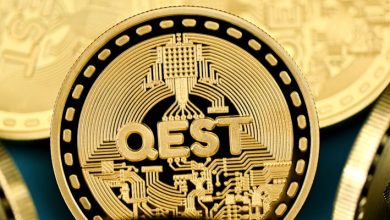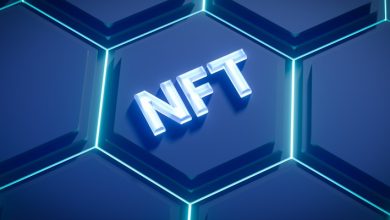Crypto and the Metaverse: Building the Economy of Virtual Worlds

- Exploring the intersection of cryptocurrency and virtual reality
- The rise of digital currencies in the virtual economy
- Navigating the complex landscape of blockchain in the metaverse
- The potential impact of NFTs on virtual world economics
- Understanding the role of decentralized finance in virtual environments
- Challenges and opportunities for merging crypto and the metaverse
Exploring the intersection of cryptocurrency and virtual reality
The convergence of cryptocurrency and virtual reality is an exciting area of development that is shaping the future of digital economies. As virtual worlds become more sophisticated and immersive, the use of cryptocurrencies as a medium of exchange within these environments is gaining traction.
One of the key benefits of using cryptocurrency in virtual reality is the ability to facilitate seamless transactions without the need for traditional banking systems. This decentralization of financial transactions offers greater security and privacy for users, while also reducing transaction fees and processing times.
Furthermore, the integration of cryptocurrency in virtual reality opens up new opportunities for creators and developers to monetize their content. By leveraging blockchain technology, creators can tokenize their virtual assets and sell them to a global audience, creating new revenue streams in the metaverse.
As the metaverse continues to expand and evolve, the intersection of cryptocurrency and virtual reality will play a crucial role in shaping the economy of these digital worlds. By embracing this intersection, we can unlock new possibilities for commerce, creativity, and community building in virtual environments.
The rise of digital currencies in the virtual economy
The rise of digital currencies in the virtual economy has been a game-changer for online transactions within virtual worlds. Cryptocurrencies like Bitcoin, Ethereum, and others have gained popularity as a means of exchange due to their decentralized nature and security features. These digital assets allow users to buy, sell, and trade virtual goods and services without the need for traditional banking systems.
As the Metaverse continues to expand, digital currencies are becoming more widely accepted as a form of payment. This shift towards a decentralized economy has opened up new opportunities for virtual entrepreneurs to monetize their creations and for users to participate in the virtual economy without restrictions.
With the growing adoption of digital currencies in the Metaverse, there is a need for secure and efficient payment systems to facilitate transactions. Blockchain technology, which underpins cryptocurrencies, provides a transparent and tamper-proof ledger that ensures the integrity of transactions within virtual worlds.
Navigating the complex landscape of blockchain in the metaverse
Navigating the intricate terrain of blockchain within the metaverse can be a daunting task for many individuals and businesses alike. With the rapidly evolving landscape of virtual worlds and digital economies, understanding how to leverage blockchain technology effectively is crucial for success.
One of the key challenges in this space is the need for interoperability between different blockchain platforms. This allows for seamless integration of assets and transactions across various virtual environments, creating a more fluid and interconnected metaverse experience.
Furthermore, the security and transparency offered by blockchain technology are essential for building trust and credibility within the virtual economy. By utilizing decentralized ledgers and smart contracts, users can have greater confidence in the integrity of transactions and the ownership of digital assets.
In addition, the potential for decentralized finance (DeFi) applications within the metaverse presents exciting opportunities for innovation and growth. By enabling peer-to-peer lending, trading, and other financial services within virtual worlds, blockchain technology can revolutionize the way economic interactions occur in these digital environments.
Overall, navigating the complex landscape of blockchain in the metaverse requires a deep understanding of the technology, as well as a strategic approach to leveraging its capabilities for building a robust virtual economy. By staying informed and adapting to the latest developments in this space, individuals and businesses can position themselves for success in the evolving world of crypto and the metaverse.
The potential impact of NFTs on virtual world economics
In the realm of virtual world economics, NFTs have emerged as a game-changer. Non-fungible tokens are revolutionizing the way virtual assets are bought, sold, and traded within digital environments. The potential impact of NFTs on the economy of virtual worlds is significant, offering new opportunities for creators, investors, and users alike.
NFTs provide a unique way to tokenize ownership of digital assets, such as virtual real estate, in-game items, and artwork. By leveraging blockchain technology, NFTs ensure scarcity, authenticity, and provenance, making them highly valuable in virtual economies. As a result, NFTs can drive new forms of commerce, investment, and entrepreneurship within virtual worlds.
One of the key benefits of NFTs in virtual world economics is the ability to establish verifiable ownership and transferability of digital assets. This feature unlocks new possibilities for creators to monetize their work, users to own and trade virtual items, and investors to participate in virtual economies. Additionally, NFTs can foster a more transparent and secure marketplace, reducing fraud and ensuring trust among participants.
Furthermore, NFTs can enable new revenue streams for virtual world platforms and developers. By integrating NFTs into their ecosystems, platforms can create new monetization models, such as royalties, licensing fees, and asset sales. This can incentivize innovation, creativity, and economic growth within virtual environments, benefiting all stakeholders involved.
In conclusion, the potential impact of NFTs on virtual world economics is vast and transformative. As NFTs continue to gain traction and adoption, they have the power to reshape the way value is created, exchanged, and distributed in virtual worlds. By embracing NFTs, virtual world economies can unlock new opportunities for growth, prosperity, and sustainability in the digital age.
Understanding the role of decentralized finance in virtual environments
When it comes to virtual environments, decentralized finance (DeFi) plays a crucial role in shaping the economy of these digital worlds. DeFi refers to the use of blockchain technology and smart contracts to provide financial services without the need for traditional intermediaries such as banks. In the context of the metaverse, DeFi can offer a range of benefits and opportunities for users, including increased financial autonomy, transparency, and security.
One of the key advantages of DeFi in virtual environments is the ability to conduct peer-to-peer transactions without relying on centralized authorities. This can help to reduce fees, increase transaction speed, and eliminate the risk of censorship or control by third parties. By leveraging DeFi protocols and platforms, virtual world participants can access a wide range of financial services, including lending, borrowing, trading, and asset management.
Furthermore, DeFi in the metaverse can enable users to create and trade digital assets, such as non-fungible tokens (NFTs), in a decentralized and secure manner. This can open up new possibilities for digital ownership, creativity, and monetization within virtual worlds. By using DeFi tools and technologies, individuals can tokenize their virtual assets, establish ownership rights, and exchange them with other users in a trustless and efficient way.
Overall, understanding the role of decentralized finance in virtual environments is essential for building a vibrant and sustainable economy in the metaverse. By embracing DeFi principles and practices, virtual world participants can empower themselves financially, promote innovation and collaboration, and unlock new pathways for economic growth and prosperity in the digital realm.
Challenges and opportunities for merging crypto and the metaverse
The merging of crypto and the metaverse presents both challenges and opportunities for the virtual world economy.
On one hand, the decentralized nature of cryptocurrencies can bring transparency and security to virtual transactions. This can help in combating fraud and ensuring trust among users.
However, the volatile nature of crypto prices can pose a risk to the stability of virtual economies. Fluctuations in value can impact the purchasing power of users and affect the overall financial ecosystem of the metaverse.
Another challenge is the scalability of blockchain technology in the metaverse. As virtual worlds grow in size and complexity, the current infrastructure may struggle to keep up with the demands of a large user base.
Efforts are being made to improve the scalability of blockchain networks to support the expanding needs of the metaverse, but further development is needed to ensure smooth operations.
On the other hand, the integration of crypto in the metaverse opens up new opportunities for innovation and economic growth.
Smart contracts powered by blockchain technology can enable automated transactions and secure agreements between users, reducing the need for intermediaries and streamlining processes.
NFTs, or non-fungible tokens, are also revolutionizing the way virtual assets are bought, sold, and traded in the metaverse.
These unique digital assets can represent anything from virtual real estate to in-game items, creating new markets and revenue streams for content creators and developers.
Overall, the merging of crypto and the metaverse is a complex process that requires careful navigation of challenges and exploration of opportunities.
With the right strategies and technological advancements, the virtual world economy can thrive and evolve into a sustainable ecosystem for users and businesses alike.



